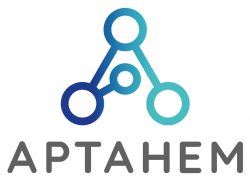2024-12-10

CEO Björn Hembre
"We have growth potential within our existing licenses and see opportunities for further expansion in Iceland, where salmon farming is becoming increasingly important to the national economy."
For those who are not familiar with Icelandic Salmon, can you tell us more about your company, what you do, and the role you play in salmon farming and the food industry?
Icelandic Salmon AS is a Norwegian company that owns and operates Arnarlax in Iceland, which is also the brand name. Arnarlax is the largest producer of salmon in Iceland and has been a key player in establishing and developing the salmon farming industry in the country.
The company is fully integrated, meaning that we manage the entire production chain. This includes raising smolt (juvenile salmon) in our hatcheries, farming salmon in the sea, processing the fish in our own facilities, and handling sales and distribution to the market. Currently, we have licenses to farm 23,700 tonnes of biomass in the sea, which subsequently translates to an annual production capacity of around 26,000 tonnes of harvested salmon.
Our primary market is Europe, but we also export a significant share of our salmon to the United States and Asia. As the leading producer of salmon in Iceland, we not only contribute to the global food industry but also play an important role in supporting the local economy and advancing sustainable food production practices.
Can you share more about your expansion plans and how they are expected to impact your operations and the local community?
We have room to grow within our current licenses of 23,700 tonnes of biomass and have applied for an additional 14,500 tonnes of biomass. While the approval process has taken some time, we expect a resolution in the near future. We operate in sparsely populated areas in the northwest of Iceland, where our presence plays a crucial role. For instance, about 15% of the workforce in the municipalities where we operate is employed by us, in addition to the service and trade industries we support. Salmon farming is also gaining national importance in Iceland, accounting for about 5% of the country’s export value this year. In the short term, our goal is to reach 26,000 tonnes, and with additional licenses, we aim to grow to 40,000 tonnes in the coming years.
Earlier this year, you were granted a new license for a smolt facility at Gileyri, enabling increased production capacity. How will this license affect your production chain, and what further expansion opportunities do you see ahead?
The license is a preparation for future growth. Currently, we have sufficient smolt capacity, however when we secure the additional 14,500 tonnes of biomass we have applied for, we are ready to expand further. Now that we have the license in hand, it’s just a matter of making the investment decision and starting construction.
In the third quarter of 2024, you reported that 25% of your sales went to the North American market. What is your view of this market?
North America is an important market for us since we can ship fresh salmon by boat, which only Iceland and the Faroe Islands can do. This provides lower logistics costs, and a smaller carbon footprint compared to air freight. We have invested in chilling technology that gives our salmon a shelf life of 21 days, ensuring that it arrives at the market as fresh as air-freighted fish. North America is also generally a higher-paying market than Europe, with the United States being the largest single market for salmon globally.
In September 2021, you launched your own brand, ”Arnarlax – Sustainable Icelandic Salmon,” to differentiate your products and reach new markets. How has the reception been since the launch, and what are your future plans for the brand?
”Arnarlax” is primarily a business-to-business brand and is not currently visible on retail shelves. Within the industry, we are well-known and work closely with specific customers to develop premium products. For example, in the US, we launched a brand called ”Icefjord” since it is easier for American consumers to pronounce. We have also sold fish under the ”Icefjord” brand in Japan. Our strategy is to collaborate with premium customers who want to highlight the origin of their products, helping us position Icelandic salmon as a high value offering.
Where do you see Icelandic Salmon in three years, and what is your strategy to get there?
In three years, we aim to produce 26,000 tonnes of salmon, for which we have already made the necessary investments in smolt production, processing capacity, and our sales team. Some additional investment will be required for farming infrastructure, such as sea cages and boats, but overall, we are well-prepared to achieve this goal with our current licenses.
Can you give three reasons why Icelandic Salmon is an attractive investment today?
- We have growth potential within our existing licenses and see opportunities for further expansion in Iceland, where salmon farming is becoming increasingly important to the national economy.
- We have addressed biological challenges and believe that the company’s valuation will improve together with increased production.
- Global demand for salmon is growing faster than supply, which benefits us. The US is the largest salmon market in the world where we already have a strong presence, which we will capitalize on further.




